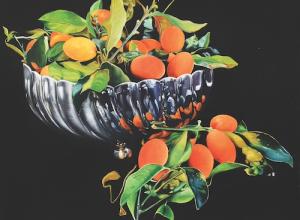The American painter, printmaker and designer championed abstract art in the early 20th century with works that translated European modernisms into an American art form. While she experimented with post-impressionism, pointillism, cubism and abstraction, she was best known for her innovative printmaking technique. By cutting a design into a soft block of wood, then inking and transferring its individual sections one by one, Lazzell produced prints that were highly unique, with translucent colors floating within the white boundaries left by her incised lines. Over her career, she produced more than 100 woodcuts using this white-line technique.
“‘Becoming an American Modernist’ is a testament to Blanche Lazzell’s ingenuity. Her early adoption and advocacy of abstraction in the United States, exemplified by her masterful white-line woodcuts, inspired a generation of artists to embrace bold colors and flattened forms. Showcasing Lazzell’s work in various media across different stages of her career, ‘Becoming an American Modernist’ invites visitors to trace this visionary female artist’s highly independent path to modernism,” said Jordan Hillman, curatorial associate at the Bruce Museum.

































